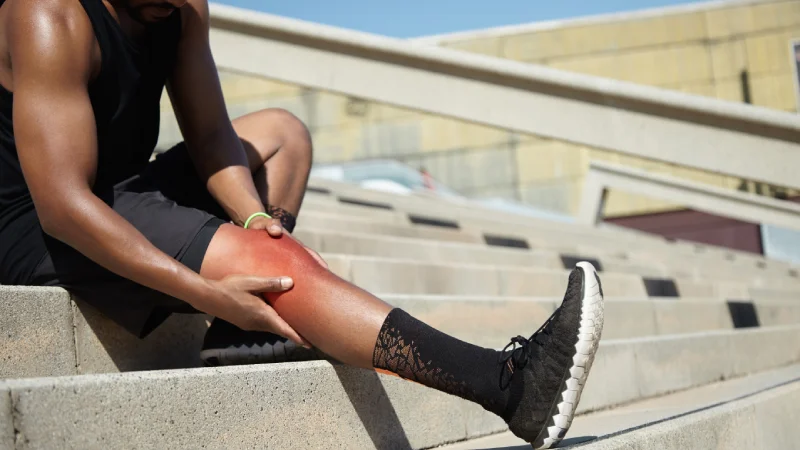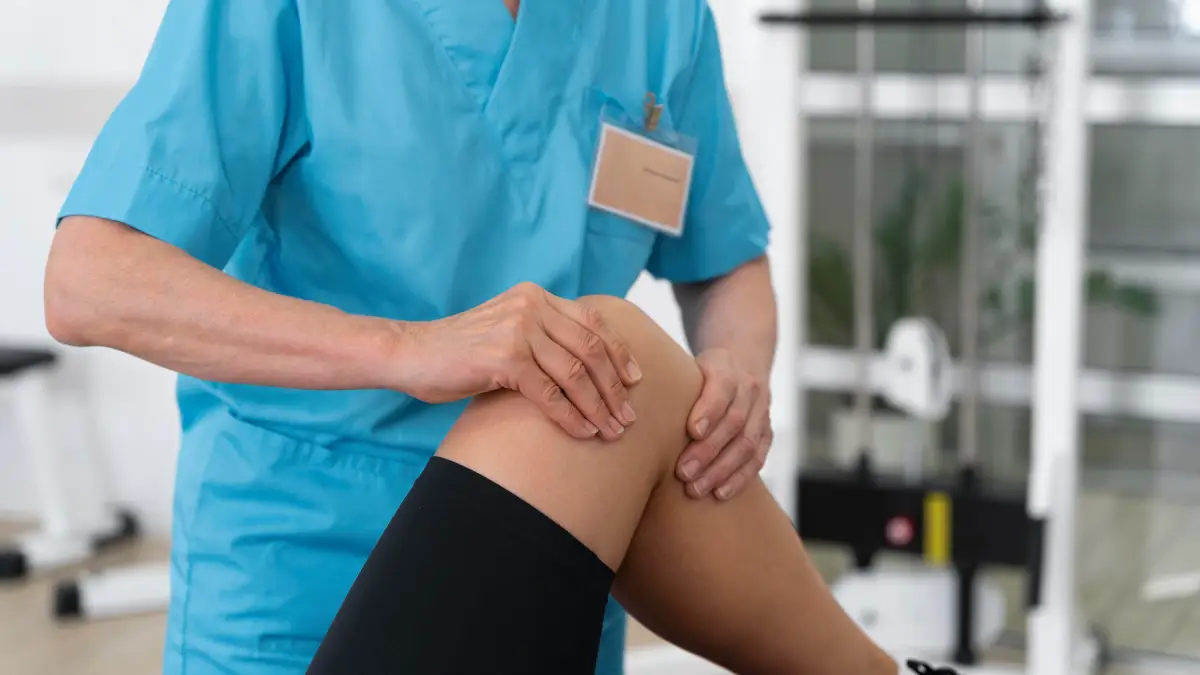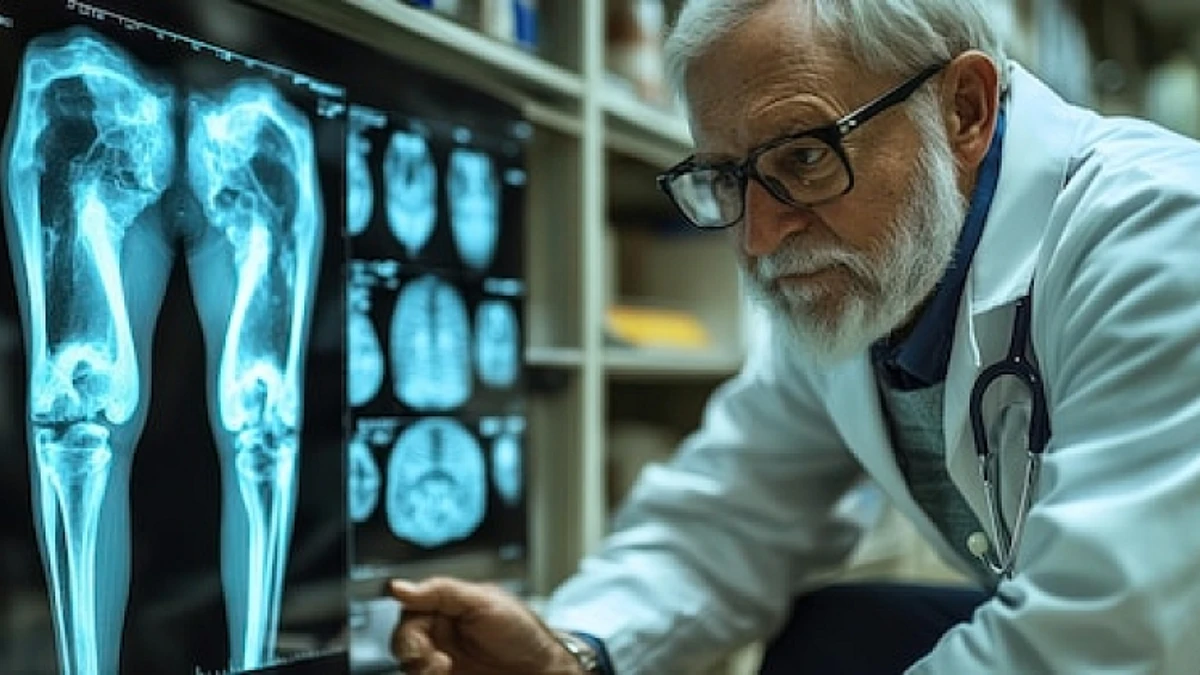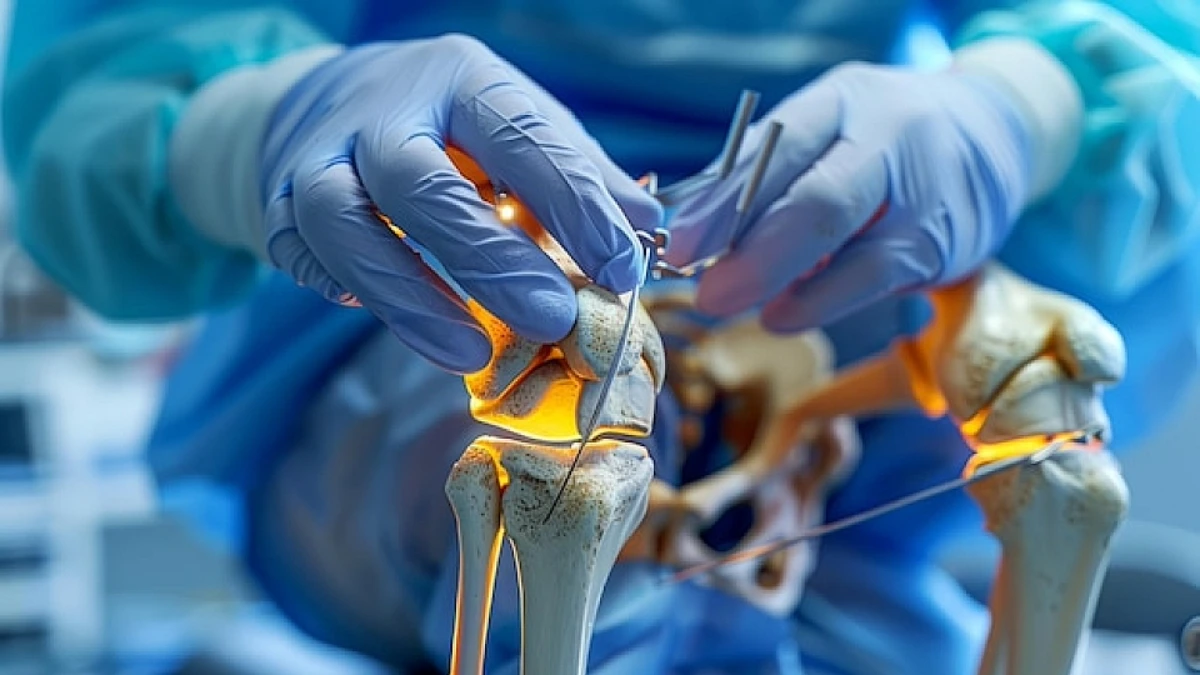What Causes Anterior Cruciate Ligament Injury?
Sudden deceleration, twisting or pivoting motions, and direct contact or collision often cause anterior cruciate ligament (ACL) injuries. Some of the common causes of ACL injuries include:
Sudden stops or changes in direction while playing sports, such as soccer, football, basketball, or skiing.
- Landing from a jump incorrectly, such as landing on the knee from a jump shot in basketball or from a ski jump.
- Direct contact, such as a collision during a tackle in football or being hit by a ball in soccer.
- Overuse or repetitive motions, such as running or jumping, can also lead to an ACL injury over time.
- Improper technique or lack of conditioning can also contribute to the risk of an ACL injury.
Some people may have inherent physical characteristics such as muscle imbalances, joint laxity, or biomechanical factors that make them more susceptible to an ACL injury.
Symptoms of Anterior Cruciate Ligament (ACL) Tear
A complete ACL tear occurs when the ligament is stretched or ruptured and can no longer perform its function of stabilizing the knee joint. Learn about the common symptoms of an ACL tear:
- A popping sound at the time of injury
- Pain and swelling in the knee
- Instability or a feeling of the knee giving out
- Difficulty bearing weight on the affected knee
- Limited range of motion in the knee
- Bruising around the knee
- Tenderness along the joint line
All anterior cruciate ligament injuries will exhibit all of these symptoms, some of which may not appear for many days or even weeks.
In addition to the physical symptoms, an ACL injury can also have a significant impact on a person’s daily life and activities. People with ACL injuries may have difficulty performing daily activities such as walking, climbing stairs, and even sitting or lying down. They may also experience difficulty returning to sports or other physical activities.
ACL Injury Diagnosis
The diagnosis of an ACL injury typically starts with a physical examination by a doctor, who will check for swelling, instability, and pain in the knee. Specialized tests such as the Lachman test or pivot-shift test may also be performed to assess the stability of the knee.
Imaging tests such as X-rays, MRI or CT scans may also be ordered to confirm the diagnosis and determine the extent of the injury.
An X-ray can reveal bone fractures or dislocations that may have occurred, while an MRI is the most sensitive method for diagnosing an ACL injury and can also show other soft tissue injuries in the knee joint. CT scans can also be used to evaluate bone and ligament injuries.
In some cases, a doctor may perform arthroscopy, a minimally invasive surgical procedure that uses a small camera to look inside the knee joint and confirm the diagnosis.
How to Prevent ACL?
Anterior cruciate ligament (ACL) injuries can be difficult to prevent, but there are several steps that can be taken to reduce the risk of injury. Some ways to prevent ACL injuries include:
- Strengthening exercises
- Flexibility exercises
- Plyometric exercises
- Proper form and technique
- Wearing appropriate equipment
- Being aware of the signs and symptoms of an ACL injury
- Avoiding overuse
- Proper warm-up
Anterior Cruciate Ligament Injury Treatment
Treatment of a torn anterior cruciate ligament will depend on the severity of the injury, the patient’s age, activity level, and overall health. Treatment options include:
Non-surgical treatment
This includes rest, ice, compression and elevation (RICE) to reduce swelling and pain. Physical therapy is also an important aspect of non-surgical treatment as it can help to regain strength and stability in the knee. Bracing may also be used to provide support and stability to the knee.
Surgical treatment
Knee replacement surgery is typically recommended for patients who are physically active and want to return to sports or other activities that are in great demand. Surgery to repair or replace the anterior cruciate ligament is done arthroscopically, which is a minimally invasive procedure that uses small incisions and a camera to view the inside of the knee. After surgery, physical therapy is crucial to regain strength and stability in the knee and to prevent further injury.
Rehabilitation
Rehabilitation is an important aspect of treatment, regardless of whether you choose surgery or non-surgical treatment. Physical therapy will help you regain strength, flexibility, and stability in the knee, and help you return to normal activities.
What Will Happen If a Cruciate Ligament Injury Is Left Untreated?
Untreated anterior cruciate ligament (ACL) injuries can result in a number of complications. Some of these complications include:
- Knee instability
- Chronic knee pain
- Osteoarthritis
- Loss of muscle strength
- Limited mobility
- Psychological distress
Factors That Increase the Risk of ACL
There are several risk factors that may increase a person’s risk of suffering an anterior cruciate ligament (ACL) injury. Some of these risk factors include:
Participating in sports that involve sudden changes of direction, jumping, and collision, such as soccer, football, basketball, and skiing.
Being female, due to differences in muscle strength, muscle activation patterns, and hormonal factors.
- Having a previous ACL injury
- Having poor muscle strength and flexibility
- Having poor posture and form
- Having a history of knee injuries
- Having certain inherited traits
By consulting with our surgeons in the Orthopedics and Traumatology department at Avicenna International Hospital, you can receive personalized recommendations for the best treatment based on your specific health condition. Simply complete the contact form and one of our experts will be in touch to discuss your options.







